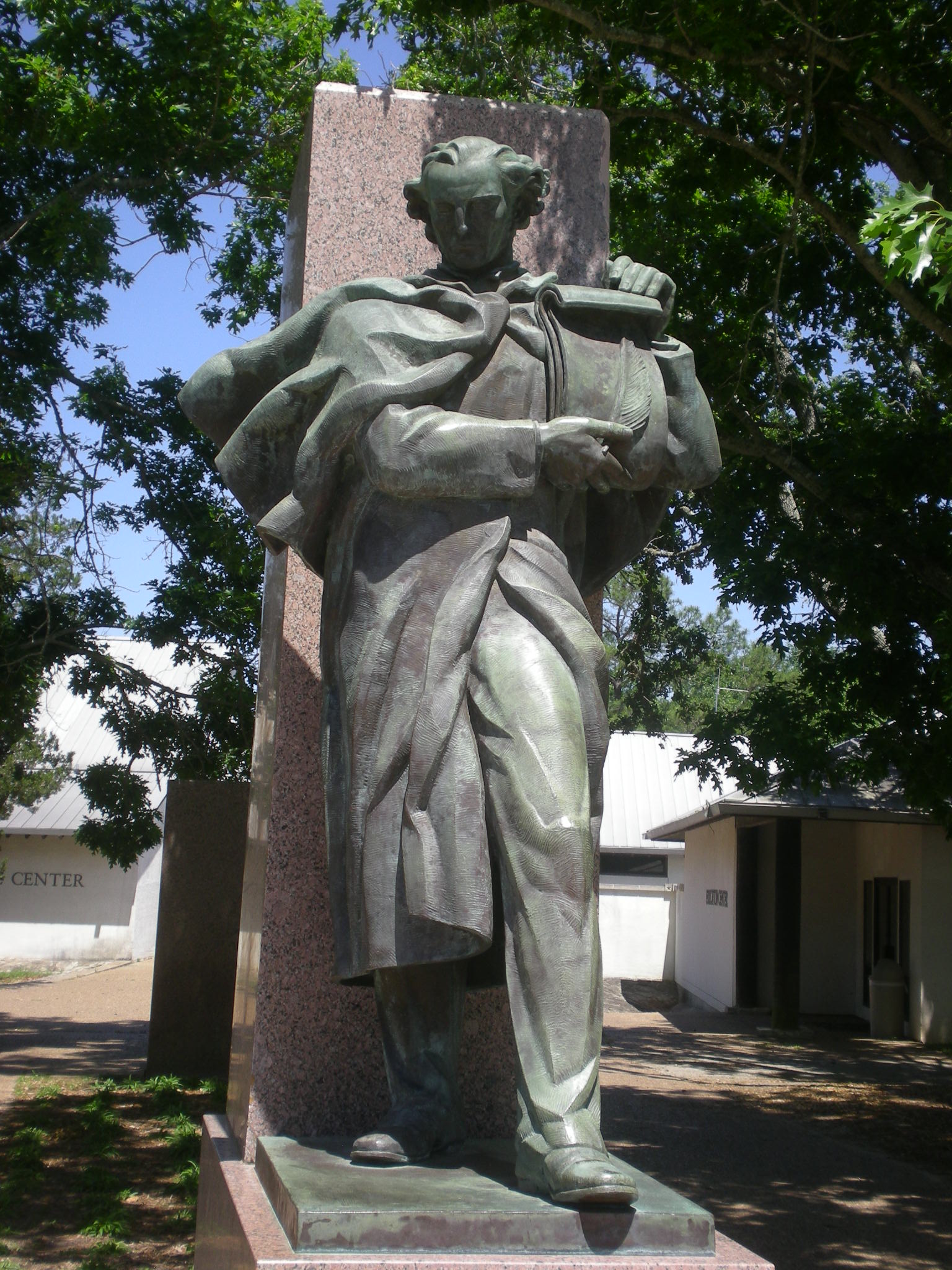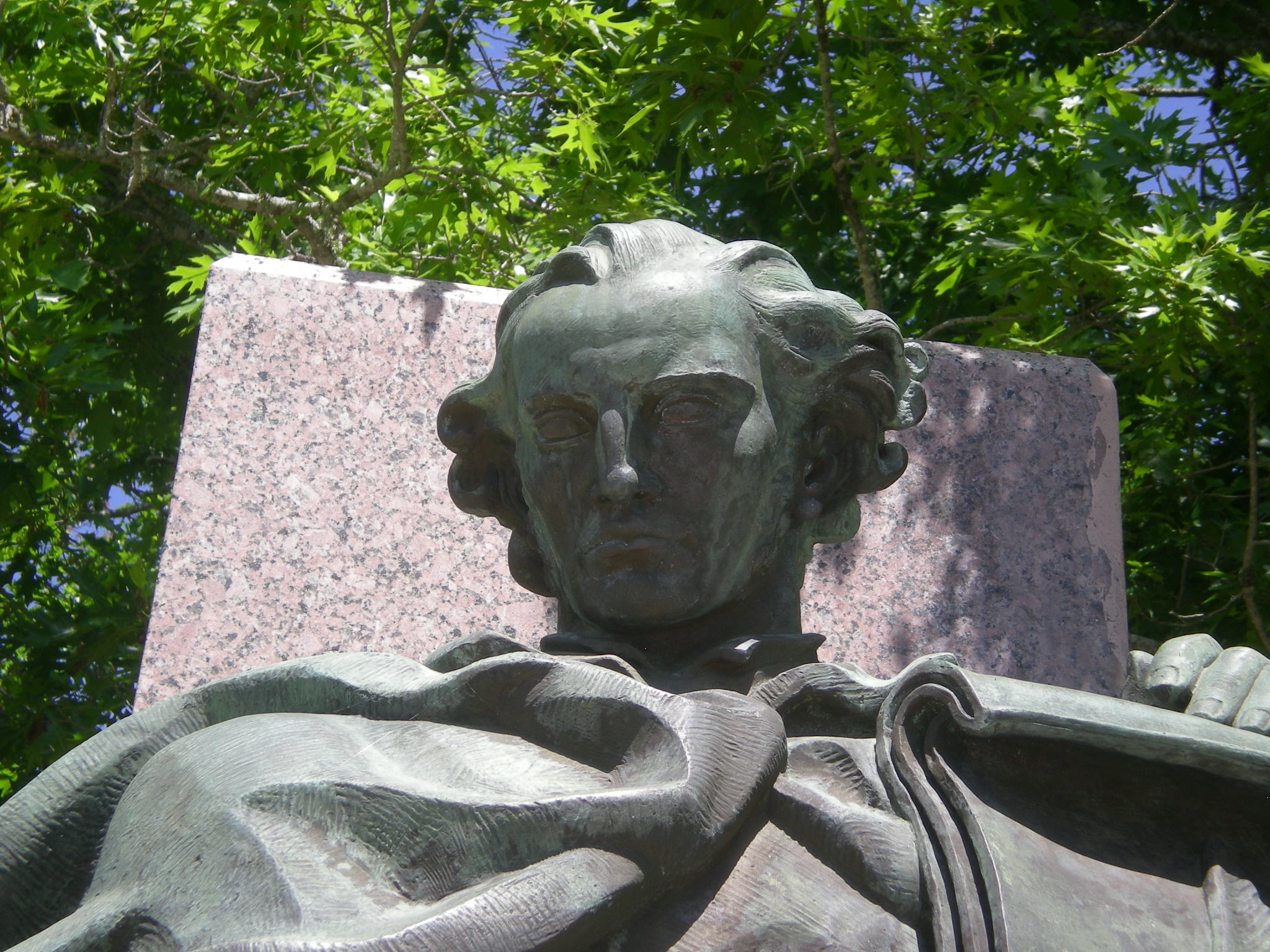Not far south of College Station and Bryan is Washington, Texas, an unincorporated place with a small population. In some alternate universe, it’s a major city sprawling along the Brazos River in Washington County – and it’s the capital of Texas (the state, or an independent nation; maybe that’s two different alternatives), best known for a large public university, its tech industry, and a thriving music scene. Popularly called Brazos, to distinguish it from that other Washington on the Potomac, the city also has a countercultural streak: Keep Brazos Weird, the bumper stickers say.
For a while, little Washington on the Brazos River was the capital of the Republic of Texas – 1842 to the end of independence in 1845, but then a town further west permanently won the prize of state capital, where it remains. Along the way, the back-and-forth of the Texas capital location led to the odd incident known as the Archive War, which wasn’t really a war, and which I don’t remember being discussed in 7th grade Texas History class.
These days, Washington, Texas, is best known as the site Texas declared independence from Mexico in 1836, a fact that was taught in Texas History class. That event is memorialized at the 293-acre Washington-on-the-Brazos State Historic Site, owned and operated by the Texas Parks and Wildlife Department. More about it here.
Jay and I took a look at the site on the way from College Station to San Antonio on April 25. I’d never visited before. The site has three major components: Independence Hall, the Star of the Republic Museum, and the Barrington Living History Farm. We saw the first two, along with the visitors center, where we each bought a small Come and Take It flag in the gift shop because how many places can you do that? (Amazon doesn’t count.)
Near the visitors center is a bronze of this fellow: George Campbell Childress (1804-1841).
 Another of the long line of Tennesseans who came to Texas early, and a brother-in-law of James K. Polk, Childress was honored with this bronze because he’s acknowledged to be author of the Texas Declaration of Independence. Note the quill and scroll. He was head of the committee tasked on March 1 to write a declaration, and it was ready the next day, so it seems likely that he’d already prepared the thing. The document clearly owes a rhetorical debt to Jefferson. The first paragraph says:
Another of the long line of Tennesseans who came to Texas early, and a brother-in-law of James K. Polk, Childress was honored with this bronze because he’s acknowledged to be author of the Texas Declaration of Independence. Note the quill and scroll. He was head of the committee tasked on March 1 to write a declaration, and it was ready the next day, so it seems likely that he’d already prepared the thing. The document clearly owes a rhetorical debt to Jefferson. The first paragraph says:
When a government has ceased to protect the lives, liberty and property of the people, from whom its legitimate powers are derived, and for the advancement of whose happiness it was instituted, and so far from being a guarantee for the enjoyment of those inestimable and inalienable rights, becomes an instrument in the hands of evil rulers for their oppression.
Even so, the list of grievances is specific to the time and place, such as abrogation of the 1824 Constitution of Mexico and the annoying union of Texas with the state of Coahulia, but mainly boiling down to the assertion that no dictator in Mexico City’s going to tell us what to do.
 The deco-like statue itself dates from 1936 – the centennial of Texas independence – and was done by Raoul Josset, a French sculptor who immigrated to the United States in the early 1930s, and left behind a number of works, including Childress but also “The Spirit of the Centennial,” now in Fair Park in Dallas, and the Fannin Monument in Goliad, Texas. More about Josset here.
The deco-like statue itself dates from 1936 – the centennial of Texas independence – and was done by Raoul Josset, a French sculptor who immigrated to the United States in the early 1930s, and left behind a number of works, including Childress but also “The Spirit of the Centennial,” now in Fair Park in Dallas, and the Fannin Monument in Goliad, Texas. More about Josset here.